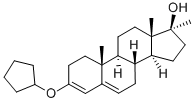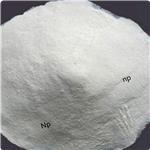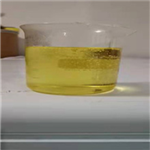A) 14 g of ethyl enolether of androstenedione, melting at 149°-151°C (obtained in a yield of 85% of the theoretical amount by treating androsteaedione with ethyl orthoformate), were added to a boiling solution of37 ml of cyclopentanol and 0.450 g of p-toluenesulfonic acid in 2.5 L of benzene. The mixture was distilled over an approximately 40 minute period, so that the ethanol, which evolved during the exchange reaction, was evaporated off completely.
Then 0.5 ml of pyridine was added to the remaining solution and the mixture was concentrated under vacuum to dryness. The residue, taken up with a mixture of methanolmethylene chloride containing a few drops of pyridine, gave 13.8 g of cyclopentyl enolether of androstenedione melting at 181°183°C. Yield about 85%.
B) The cyclopentyl enolether of androstenedione was converted to the corresponding cyclopentyl enolether of 17α-methyl testosterone as follows:In a 3-necked flask fitted with a dropping funnel, reflux condenser, stirrer and nitrogen inlet tube, there was placed a solution of 25 g of methyl magnesium bromide in 150 ml of ether. With stirring and under an atmosphere of nitrogen, a solution of 4.1 g of androstenedione 3-cyclopentyl enolether in 80 ml of anhydrous benzene was added slowly. The reaction mixture was refluxed for 1 hour and allowed to stand overnight at room temperature. The mixture was then treated with an aqueous solution of 30% ammonium chloride, the organic layer separated off, washed with water and dried over anhydrous sodium sulfate. The solvent was evaporated and the residue taken up with dilute methanol to yield 3.2 g of a white product. Crystallization from methanol containing few drops of pyridine give the pure 17α-methyltestosterone 3-cyclopentyl enolether; MP: 148-152°C; [α]D =-150° (dioxane).
Methyltestosterone, 17β-hydroxy-17-methylandrost-4-en-3-one, is only about half asactive as testosterone (intramuscularly), but it has the greatadvantage of being orally active.



